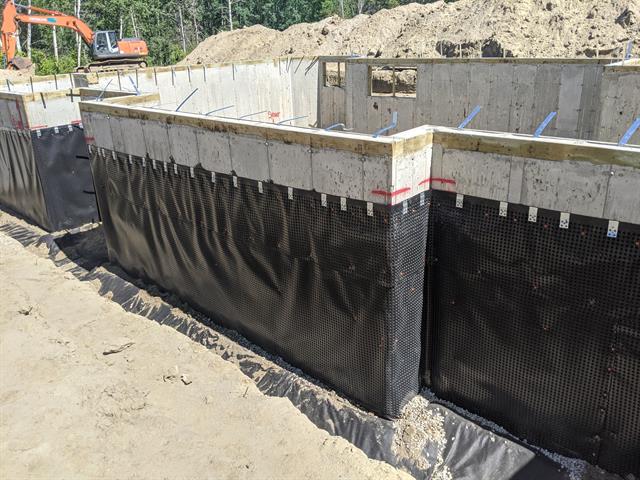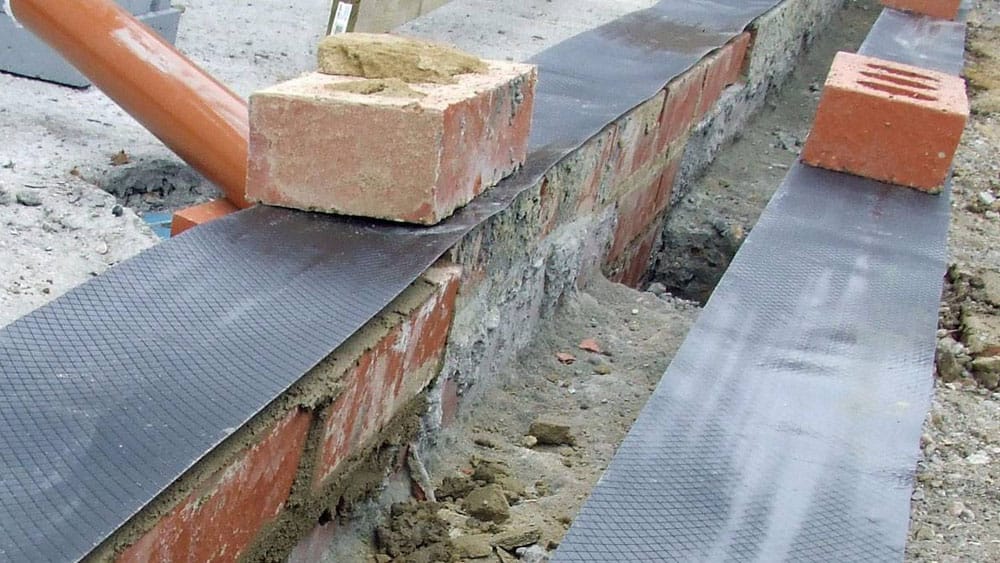Checking Out the Various Strategies and Solutions for Effective Damp Proofing
Moisture in structures positions substantial difficulties to both structural honesty and interior air quality. Numerous methods and options have actually emerged to combat this prevalent problem. From standard damp-proof membranes to cutting-edge chemical therapies, each approach provides unique benefits. Understanding these alternatives is essential for effective wetness control. However, selecting the best remedy depends upon details structure conditions and needs, prompting more expedition right into one of the most efficient damp proofing approaches readily available.
Understanding the Reasons For Moisture
Wetness can arise from various sources, understanding these reasons is vital for efficient removal. Typically, moisture originates from three key resources: climbing wet, permeating moist, and condensation. Rising damp happens when groundwater travels up with permeable materials, such as brick or rock, frequently because of an absence of an effective obstacle (damp specialist newcastle). Passing through wet is commonly brought on by outside factors, including roofing leaks, damaged rain gutters, or harmed walls, enabling water to penetrate a residential property. Condensation, on the other hand, results from excess moisture in the air, frequently exacerbated by poor ventilation and temperature level differences, causing water droplets basing on surface areas. Recognizing these underlying issues is essential, as each kind of dampness calls for a tailored strategy for remediation. Appropriate evaluation aids in figuring out the most effective solutions, ultimately guarding the structural stability of a structure and boosting interior air top quality
Standard Damp-Proof Membranes

Chemical Damp-Proofing Solutions
Chemical damp-proofing options use a cutting-edge technique to preventing moisture invasion in buildings. These methods generally involve the application of liquid chemicals that permeate stonework and create an obstacle versus climbing moist. Frequently utilized chemicals include silanes, siloxanes, and other water-repellent agents that respond with surface area products to produce a hydrophobic layer.The application process usually calls for drilling openings into the wall surfaces, injecting the chemical solution, and allowing it to cure. This technique is especially useful for older structures where traditional damp-proof membrane layers might be not practical. Chemical damp-proofing can be much less turbulent and much more cost-effective than extensive improvement projects.While reliable, these options depend on appropriate application and environmental conditions for peak efficiency. damp removal newcastle. Normal maintenance and tracking are vital to guarantee the durability of the damp-proofing therapy. In general, chemical damp-proofing represents a versatile option for guarding buildings versus moisture-related damage
Tooth Cavity Wall Surface Construction Techniques
Tooth cavity wall surface building techniques supply many advantages, particularly in wetness control and power performance. By integrating an air void between two layers of masonry, these wall surfaces effectively reduce water access while enhancing insulation. This combination not just protects structures from wetness but likewise adds to decreased power usage.
Benefits of Tooth Cavity Walls
When taking into consideration effective damp proofing methods, the advantages of cavity walls stick out plainly. Tooth cavity wall surfaces contain 2 different layers, developing an air space that properly decreases wetness infiltration. This design lessens the threat of dampness, as the outer wall surface acts as a barrier against rainfall and water ingress. Additionally, dental caries walls improve thermal insulation, which contributes to energy effectiveness by lowering warm loss. They likewise give audio insulation, aiding to develop a quieter interior atmosphere. The air void permits for ventilation, which helps in moisture control and reduces the possibility of mold growth. These benefits not only improve the overall comfort of a building however likewise contribute to its longevity and structural stability.
Wetness Control Methods
Efficient dampness control methods are crucial in dental caries wall surface building to ensure long-lasting protection against wetness. One key approach entails the consolidation of weep openings, which help with water drain from the cavity, protecting against build-up. In addition, the use of breathable membranes can assist manage wetness degrees while allowing entraped vapor to leave. Correct positioning of insulation is additionally critical, as it must not obstruct drainage courses. Making certain that the outer leaves of the tooth cavity wall surface are constructed with water-resistant products boosts total longevity. Normal upkeep checks are important to determine any obstructions or damages early, protecting the framework's stability. Ultimately, a mix of these techniques creates a durable protection against wetness breach in cavity walls.
Insulation and Energy Effectiveness
Insulation plays an essential role in enhancing power efficiency within cavity wall construction. By incorporating protecting products, these wall surfaces create a thermal obstacle that lessens warmth loss and minimizes power consumption. Effective insulation not just aids maintain a secure indoor temperature however additionally alleviates the risk of mould treatment newcastle moisture, as it prevents condensation within the wall cavity. Different methods, such as making use of inflexible foam boards or mineral woollen, can be employed to accomplish perfect insulation efficiency. Additionally, appropriate setup is vital to assure that gaps and gaps are lessened, which can or else compromise power performance. Ultimately, a well-insulated dental caries wall surface adds significantly to total sustainability and decreases cooling and heating prices for homeowners.
External Damp Proofing Techniques
Exterior damp proofing techniques are necessary for click this site protecting structures from dampness infiltration. Two reliable methods include the application of waterproof membranes and the setup of French drains. These services assist alleviate water buildup and preserve the integrity of buildings.
Waterproof Membrane Application
While different techniques exist for protecting against dampness access, the application of water-proof membranes remains a highly effective exterior wet proofing technique. These membranes are generally made from materials such as polyethylene, rubber, or changed asphalt, giving a durable barrier against water penetration. The installation process involves applying the membrane to the exterior surfaces of foundations or walls, making certain complete insurance coverage to avoid leakages. Proper bond and securing at joints are essential to maximizing effectiveness. Waterproof membranes can be used in numerous kinds, including liquid finishings and sheet membrane layers, enabling adaptability based upon the details needs of the framework. This method not only shields buildings from dampness yet likewise boosts their durability and architectural integrity.
French Drain Setup
One effective technique for taking care of groundwater and stopping dampness accumulation around a structure's structure is the setup of a French drainpipe. This water drainage system includes a trench loaded with gravel and a perforated pipe that reroutes surface water away from the structure. Correct installation needs mindful planning, guaranteeing that the drainpipe inclines away from the framework to facilitate suitable water circulation. Furthermore, the place of the drainpipe is essential; it ought to be placed in locations prone to pooling or excess wetness. Normal maintenance, including clearing up particles from the gravel and ensuring the pipe continues to be unobstructed, is important for long-lasting efficiency. Inevitably, a well-installed French drain can substantially reduce the danger of water-related concerns in foundations and cellars.
Interior Waterproofing Strategies
Inside waterproofing strategies are crucial for securing a structure's inside from moisture infiltration and prospective water damages. These techniques usually entail the application of specific products and techniques developed to create a dampness barrier within the structure. One usual method is making use of waterproof finishings or sealers on wall surfaces and floors, which avoid moisture from passing through surfaces.Additionally, mounting indoor water drainage systems, such as sump pumps, can successfully take care of water accumulation in cellars and creep rooms. An additional technique entails the usage of vapor obstacles, which are set up to prevent moisture movement from the ground into living spaces.Moreover, resolving any cracks or spaces in walls or structures with appropriate sealants guarantees an extensive protection against water breach. By executing these interior waterproofing approaches, homeowner can substantially decrease the risk of mold and mildew growth, architectural damages, and various other moisture-related concerns. Appropriate execution of these methods is important for long-lasting protection and building honesty.
Regular Maintenance and Examination Practices
Normal maintenance and assessment methods are essential for guaranteeing the lasting effectiveness of wet proofing remedies in any kind of structure. Routine checks allow property owners to determine very early indicators of dampness intrusion, such as peeling paint, mold development, and stuffy smells. These indicators can indicate underlying problems that need prompt attention.Inspections should be conducted a minimum of every year, concentrating on vulnerable areas like basements, crawl spaces, and exterior walls. During these evaluations, home proprietors must examine sealants, drain systems, and air flow to validate they work correctly.Additionally, keeping downspouts and seamless gutters is essential, as stopped up systems can bring about water accumulation near the structure. Implementing a normal maintenance timetable, in addition to timely repair work, can significantly prolong the life-span of moist proofing steps and secure the architectural honesty of the Extra resources building. Aggressive measures eventually contribute to the overall health and wellness of the living environment.
Frequently Asked Inquiries
The Length Of Time Does Damp Proofing Generally Last?
The period of moist proofing performance varies, commonly lasting between 20 to half a century. Elements such as application high quality, ecological problems, and maintenance practices greatly affect the durability of the damp proofing treatment.

Can I Damp Proof My Home Myself?
The individual contemplated the usefulness of do it yourself damp proofing. With correct study and the right products, it is feasible. Nonetheless, they also acknowledged the significance of expert assistance to guarantee durable performance and stop future concerns.
What Are the Indicators of Inefficient Damp Proofing?
Indicators of ineffective damp proofing consist of consistent stuffy odors, visible mold development, peeling off paint, wet patches on wall surfaces, and timber degeneration - damp specialist newcastle. Homeowners ought to resolve these issues immediately to protect against additional damage and wellness worries
Does Damp Proofing Affect Indoor Air Quality?

Just How Much Does Professional Damp Proofing Cost?
Specialist damp proofing costs vary substantially, commonly varying from $1,000 to $5,000 depending on the residential or commercial property's dimension, the extent of the damp problem, and picked approaches. Each circumstance calls for a tailored analysis for accurate prices. Frequently, wetness originates from three main resources: increasing wet, permeating moist, and condensation. When considering efficient wet proofing techniques, the benefits of cavity wall surfaces stand out prominently. Outside wet proofing methods are vital for shielding frameworks from dampness seepage. While different techniques exist for preventing wetness access, the application of water-proof membranes stays a very reliable external moist proofing strategy. Signs of inefficient wet proofing include consistent stuffy smells, visible mold development, peeling paint, wet patches on walls, and timber degeneration.